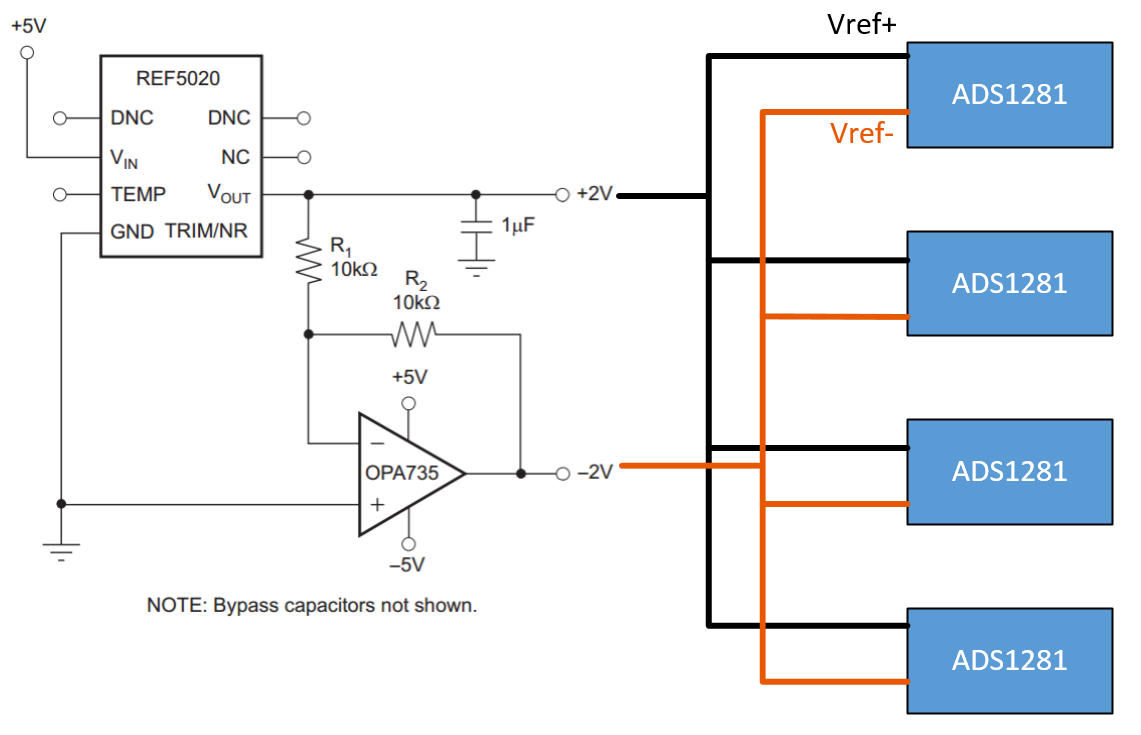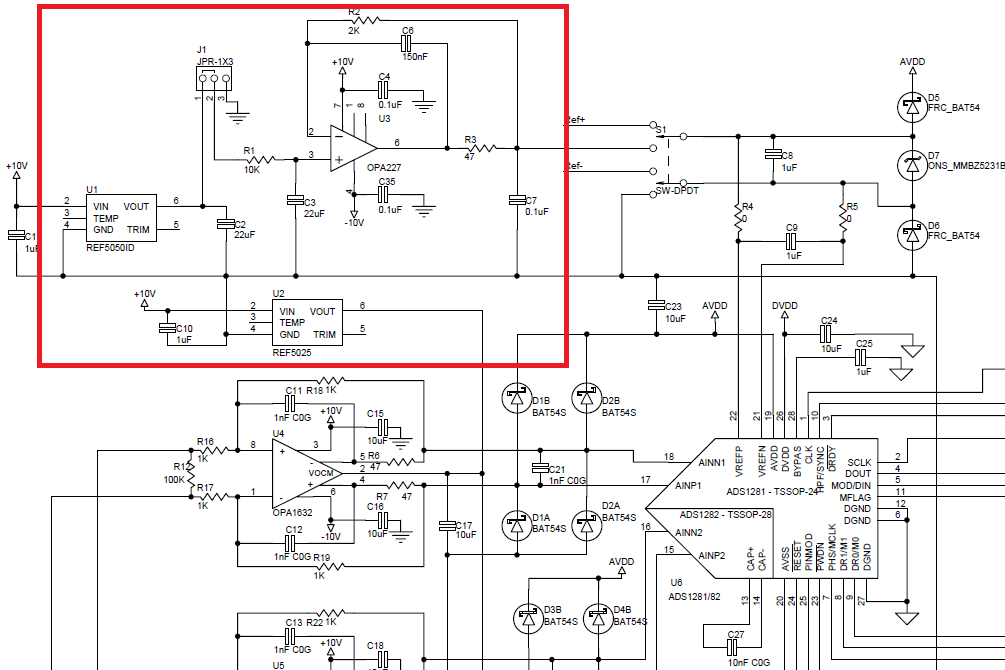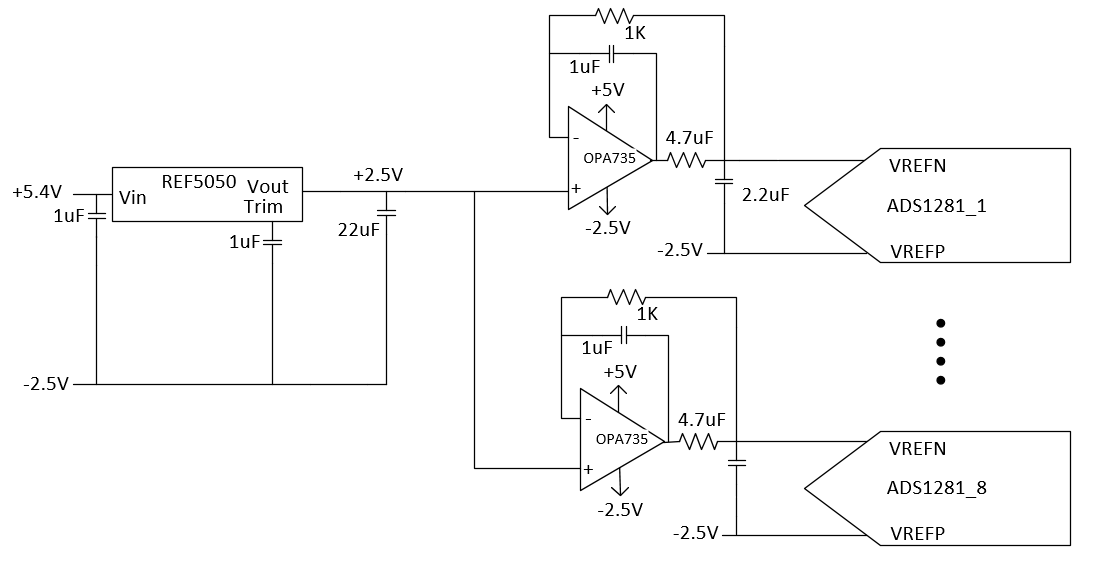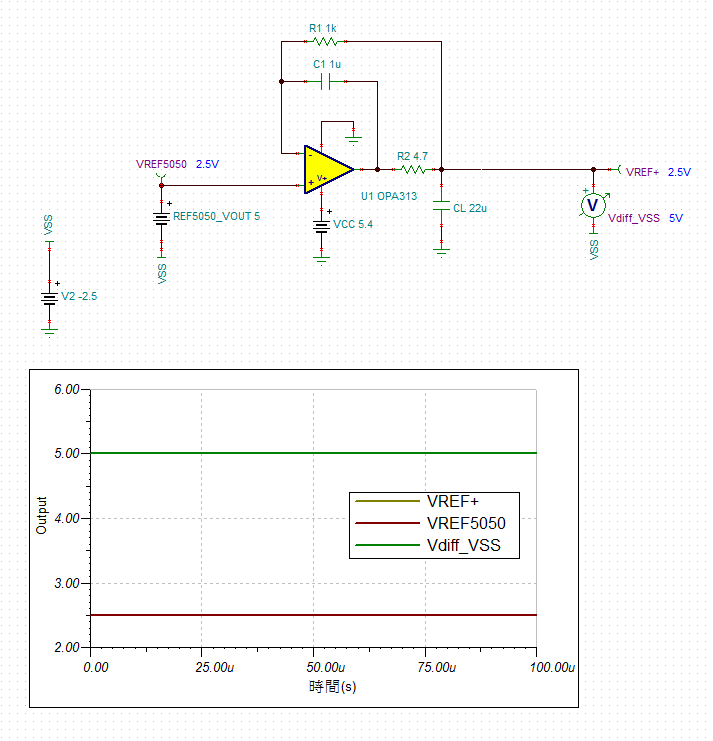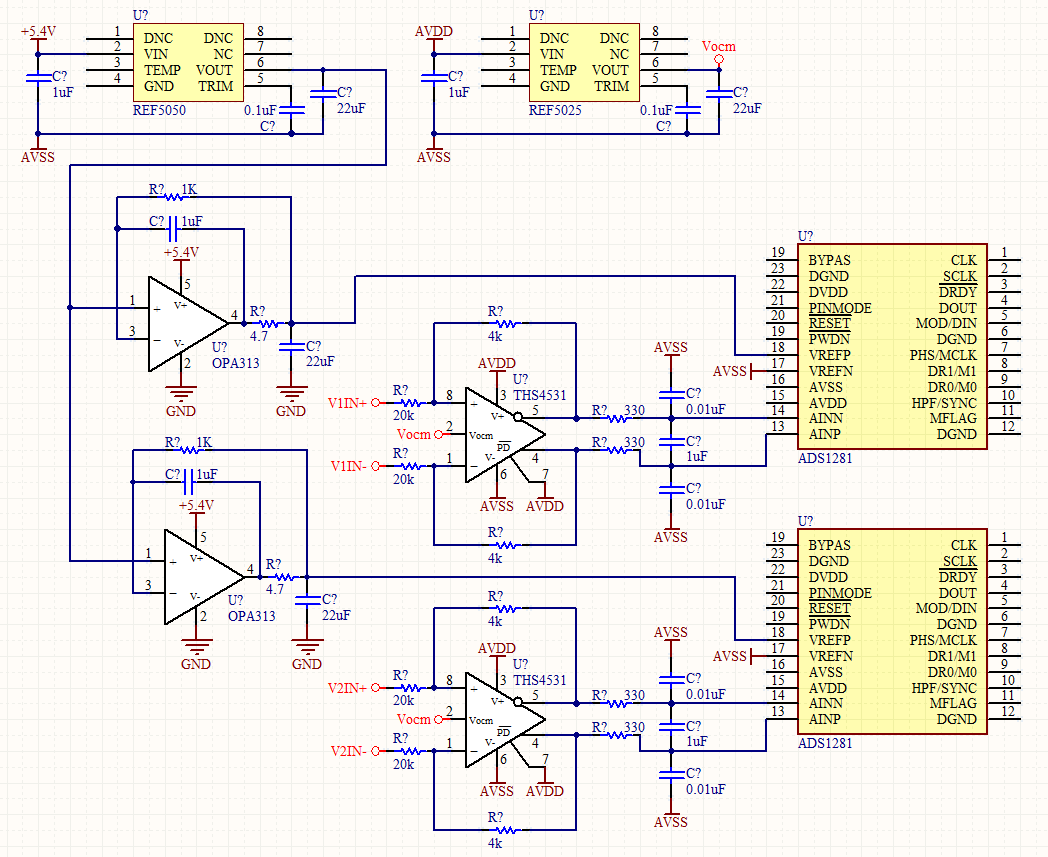Hi,
I want to design a 8-channels recorder.
I use eight ADS1281 ADCs for synchronized.
The Vref design is from the datasheet of REF50xx which is shown in the following figure.
(The circuit is REF5020, and I will replace it with REF5025)
*There are eight ADS1281, but only four ADS1281 are drawn)
My question is...
Can I use only one REF5025 for the VREF of eight ADCs?
I am not sure the performance of the circuit.
Hope someone can help me. Thanks
YHH


